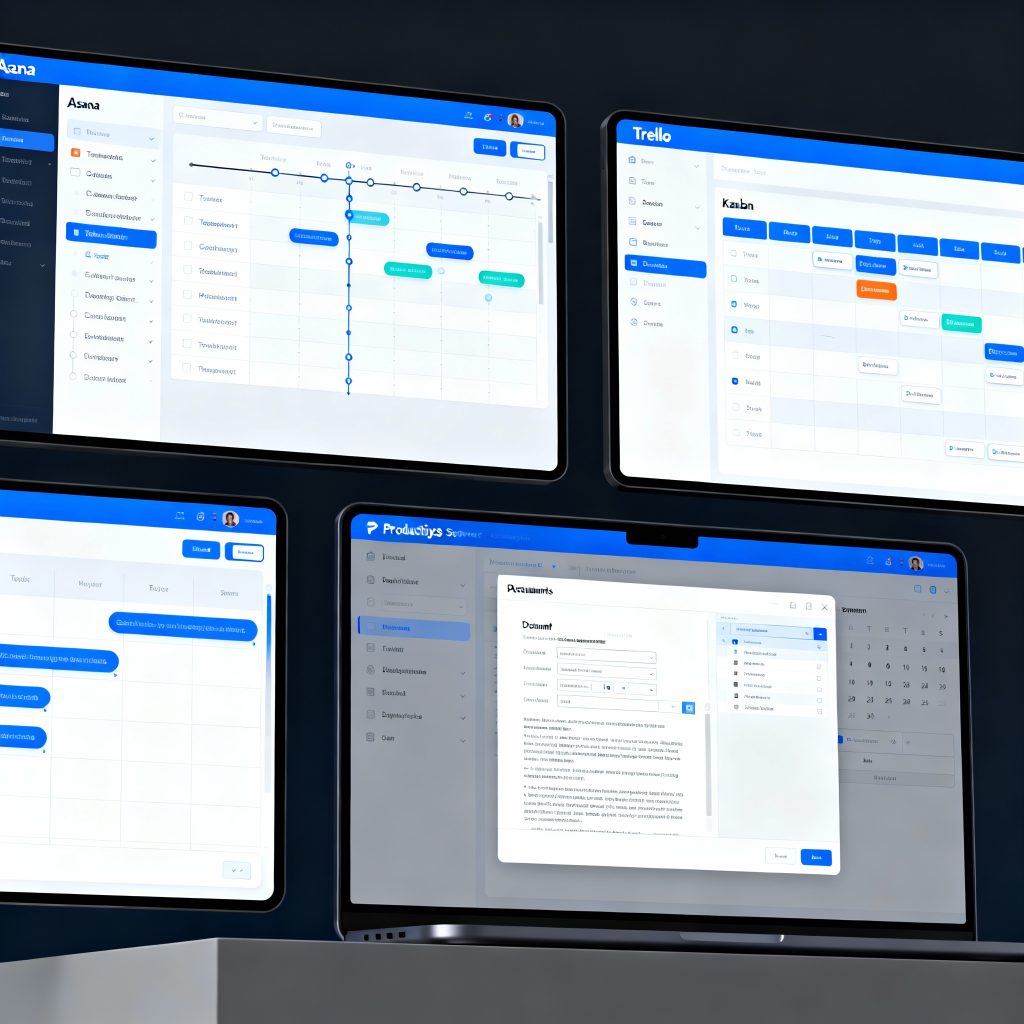Make money with virtual assistant services by providing administrative support, email management, calendar scheduling, and customer service remotely—one of the fastest-growing opportunities in 2025. In fact, demand for virtual assistant services is projected to expand by 32% over the next five years. Furthermore, by 2028, approximately 73% of teams will incorporate remote workers, with virtual assistants playing a massive role in this dramatic workforce transformation. This explosive growth creates extraordinary opportunities for organized professionals to build lucrative careers offering VA services. Whether you’re launching your first virtual assistant business or scaling to multiple team members, understanding how to make money with virtual assistant services and monetize these essential skills effectively has never been more critical.
Why Virtual Assistant Services Are in Unprecedented Demand
In today’s fast-paced business environment, executive leaders and entrepreneurs face relentless pressure to maximize productivity while managing countless administrative tasks. Research reveals that business owners waste approximately 40% of their time on administrative work that could be delegated to virtual assistants. Furthermore, 63% of customers prefer live chat support for quick assistance, and companies offering live chat see up to 48% more revenue per chat hour compared to those without this service.
The shift toward remote work has fundamentally changed how businesses operate. Rather than hiring expensive in-house staff, smart entrepreneurs and established companies increasingly turn to virtual assistants who provide flexibility, cost-effectiveness, and specialized expertise. The average cost of hiring a virtual assistant ranges from $9 to $70 per hour depending on location, skills, and experience level, compared to substantial full-time employment costs exceeding $50,000 annually plus benefits.
Forward-thinking businesses recognize that virtual assistants deliver significant return on investment. A single virtual assistant can increase an executive’s productivity by 15-20 hours weekly, translating to substantial value creation for organizations. These compelling economics drive consistent, growing demand for quality virtual assistant services across industries.
Understanding Virtual Assistant Services
What Are Virtual Assistant Services?
Virtual assistant services encompass remote administrative support that helps businesses and entrepreneurs delegate time-consuming tasks while focusing on high-value activities. Core services include email management, calendar scheduling, customer service support, data entry, bookkeeping, research, content management, and specialized services like social media management or sales support.
Professional virtual assistants serve as trusted extensions of management teams, handling everything from routine administrative work to strategic support. First and foremost, they manage inboxes, ensuring urgent messages receive immediate attention while less critical emails are organized for later review. Additionally, they maintain executive calendars, scheduling meetings while preventing conflicts and managing time zones for global teams. Furthermore, virtual assistants handle customer inquiries through email and live chat, providing responsive support that improves customer satisfaction.
The Virtual Assistant Market Landscape
The virtual assistant industry has transformed dramatically over recent years. In fact, the market continues expanding as more businesses embrace remote work models and recognize automation benefits. Specifically, administrative support represents the largest demand category, followed closely by customer service support and social media management.
Different business types require varying support levels. Most importantly, startups need general administrative assistance, while established enterprises often require specialized support like executive assistance or bookkeeping. By understanding market dynamics, you can position yourself strategically within the most profitable niches.
Core Virtual Assistant Services That Generate Revenue
1. Email and Calendar Management: The Foundation Service

Email and calendar management remains the most requested virtual assistant service because it directly impacts executive productivity. Busy professionals spend tremendous time sorting through emails, scheduling meetings, and managing calendars—activities that virtual assistants can handle more efficiently.
The Scope of Email Management Services
Professional email management extends far beyond basic inbox organization. To begin, virtual assistants triage incoming messages, identifying urgent items requiring immediate attention. Additionally, they draft responses to routine inquiries, saving executives hours each week. Furthermore, they organize emails into folders using consistent systems for easy retrieval. Moreover, they manage subscription lists, unsubscribing from unnecessary communications while maintaining important industry newsletters.
Email management also includes handling meeting coordination—identifying attendees, finding suitable times across multiple time zones, sending calendar invitations, and preparing meeting agendas. This comprehensive approach ensures executives never miss important messages while staying organized.
Calendar Scheduling Services
Calendar management is an art that requires attention to detail and strategic thinking. Specifically, virtual assistants coordinate schedules across multiple team members, preventing conflicts and maximizing productive meeting time. Additionally, they schedule meetings strategically, grouping similar items together and building in buffer time for focus work. Furthermore, they manage travel arrangements including flight bookings, hotel reservations, and ground transportation. Most importantly, they maintain calendar visibility across regions and time zones, accounting for international differences.
Pricing for Email and Calendar Services
Virtual assistants typically charge between $15 to $45 per hour for email and calendar management services, depending on experience and geographic location. US-based assistants average $25 to $45 per hour, while offshore virtual assistants range from $9 to $20 per hour. Many virtual assistants structure these services as monthly retainers, offering packages like 20, 40, or 80-hour monthly plans.
2. Customer Service and Live Chat Support: High-Demand Revenue Stream

Customer service support represents one of the highest-demand virtual assistant services because it directly impacts business revenue. In fact, 63% of customers prefer live chat support, and businesses offering this service experience significantly higher customer satisfaction and revenue.
Live Chat and Email Support
Virtual assistants handling customer support answer questions in real-time through live chat, email, and messaging platforms. To begin, they respond to customer inquiries promptly, solving problems before customers become frustrated. Additionally, they process orders, manage refunds, and resolve complaints professionally. Furthermore, they gather feedback from customers, providing valuable insights for product and service improvements. Moreover, they maintain detailed customer records, tracking interactions and resolution status.
This service requires exceptional communication skills, empathy, and problem-solving abilities. Most importantly, customer service VAs must remain calm under pressure, maintain professionalism during difficult interactions, and represent the brand positively to every customer.
Ticketing System Management
Many businesses implement ticketing systems for customer support, and virtual assistants manage these systems efficiently. Specifically, they log customer issues, prioritize tickets based on urgency, assign tasks to appropriate team members, and follow up until resolution. Additionally, they track response times, escalate urgent issues, and generate reports on support metrics.
Pricing for Customer Service Support
Customer service virtual assistants typically earn $12 to $35 per hour depending on specialization and experience. Specialized customer service roles—such as technical support or B2B customer success—command higher rates up to $40 to $50 per hour. Many businesses structure customer support as monthly subscriptions rather than hourly rates, with packages starting around $800 to $1,200 monthly for part-time support.
3. Specialized Administrative Support Services
Beyond foundational email and calendar management, virtual assistants offer specialized administrative services that command premium pricing due to required expertise.
Bookkeeping and Financial Management
Financial task management requires precision and expertise, making it one of the highest-paying VA specialties. Virtual assistants handling finances manage expense tracking, invoice creation, expense categorization, and financial reconciliation. Furthermore, they maintain accounting records, monitor cash flow, and prepare financial reports for business owners or accountants. Most importantly, this work requires understanding accounting principles and familiarity with accounting software like QuickBooks or Xero.
Bookkeeping virtual assistants earn $20 to $45 per hour, with specialized expertise commanding rates up to $50 per hour or more. Those with accounting certifications or prior accounting experience charge even higher rates because financial accuracy directly impacts business success.
Data Entry and Research
Data entry services involve inputting information into systems, organizing databases, and conducting research for clients. To begin, virtual assistants enter data from various sources into spreadsheets or database systems. Additionally, they clean existing databases, removing duplicates and correcting errors. Furthermore, they conduct market research, competitive analysis, and prospect research for sales teams. Moreover, they organize and categorize information for business analysis.
Data entry virtual assistants typically earn $12 to $25 per hour, with specialized research commands higher rates up to $35 per hour depending on complexity.
Project Coordination and Management
Some virtual assistants coordinate projects, managing timelines, communicating with team members, tracking deliverables, and ensuring on-time completion. This service requires familiarity with project management tools like Asana, Monday.com, or ClickUp. Project coordination virtual assistants earn $20 to $40 per hour, with experienced PMs commanding $40 to $65 per hour.
Building Your Virtual Assistant Business

Determining Your Business Structure
Before launching your virtual assistant business, establish the proper legal structure. To start, most beginning virtual assistants operate as sole proprietors because it’s fast, inexpensive, and requires minimal setup. Additionally, sole proprietorships offer simplicity for managing finances and taxes. However, as revenue grows or if you want liability protection, consider forming an LLC (limited liability company).
An LLC creates a separate legal entity protecting your personal assets if business issues arise. Furthermore, some clients specifically require working with registered business entities, making LLC formation valuable for landing larger contracts. Consult with accountants or business advisors to determine the optimal structure for your specific situation and location.
Legal Requirements and Registration
Depending on your location, you may need to register your business with local authorities. To begin, check with your city or county clerk’s office to understand registration requirements. Additionally, understand tax obligations including income tax, self-employment tax, and any local taxes. Most importantly, set up a dedicated business bank account to separate personal and business finances. Furthermore, obtain an Employer Identification Number (EIN) from the IRS for tax reporting purposes.
Consider business insurance protecting against liability if client systems are accidentally damaged or confidential information is mishandled. Professional liability insurance provides valuable protection for service-based businesses.
Setting Up Your Workspace
Creating a professional workspace is essential for delivering quality service and maintaining client confidentiality. To begin, set up a dedicated office space with reliable furniture and minimal distractions. Additionally, invest in a high-speed internet connection because client communication depends on consistent, fast connectivity. Furthermore, ensure your workspace has video conferencing capability for client meetings. Moreover, set up backup internet through a mobile hotspot for emergencies.
Professional equipment matters. Most importantly, invest in a quality computer or laptop meeting modern software requirements. Additionally, purchase a professional webcam and microphone for video calls. Furthermore, consider security software protecting client data and maintaining cybersecurity standards.
Pricing Your Virtual Assistant Services
Understanding Pricing Models
Virtual assistants employ multiple pricing strategies, each with distinct advantages depending on project type and client relationships.
Hourly Rate Pricing
Hourly pricing charges clients for actual time worked. To begin, this model works well for undefined tasks or clients with fluctuating needs. Additionally, hourly rates vary significantly based on geographic location and experience.
Entry-level virtual assistants (less than one year experience) charge $10 to $15 per hour, while those with intermediate experience (3-5 years) earn $15 to $30 per hour. Experienced, specialized virtual assistants command $30 to $70 per hour depending on expertise. For US-based virtual assistants, rates average $25 to $45 per hour, while offshore assistants from the Philippines, India, and Eastern Europe range from $4 to $20 per hour.
Monthly Retainer Packages
Monthly retainers provide predictable income for both parties. Specifically, clients receive a set number of hours monthly for a fixed fee. Furthermore, retainers create recurring revenue, making income more predictable. This model works particularly well for ongoing administrative support.
Typical retainer packages include 20-hour monthly plans ($200-$400), 40-hour plans ($400-$800), and 80-hour full-time equivalent plans ($800-$1,600) depending on VA expertise and location. Many virtual assistants charge 10-20% less than hourly rates for retainer arrangements, making this attractive for clients while ensuring consistent income.
Project-Based Pricing
Project-based pricing charges a flat fee for completing specific projects like database organization or research tasks. In particular, this model suits well-defined deliverables with clear completion points. Furthermore, project pricing allows you to profit from efficiency—completing faster means better hourly rates.
Specialized Service Pricing
Highly specialized services command premium pricing. In fact, executive assistant services earn $30 to $60 per hour or $3,000 to $6,000 monthly. Social media management for businesses averages $15 to $35 per hour or $500 to $2,500 monthly. Bookkeeping and accounting support ranges from $20 to $50 per hour. Online course management, the fastest-growing niche, commands $25 to $45 per hour as businesses recognize the e-learning market reaching $320 billion in 2025 with 14% projected annual growth.
Geographic Pricing Considerations
Pricing varies substantially by geographic location. Specifically, US-based virtual assistants command $25 to $45 per hour or higher. LATAM (Latin America) virtual assistants earn $7 to $18 per hour. Philippines-based assistants typically charge $4 to $14 per hour. Eastern European assistants earn $8 to $20 per hour.
Most importantly, US and Canada-based clients often prefer US-based virtual assistants despite higher costs because of timezone alignment, native English skills, and cultural understanding. Conversely, cost-conscious startups and small businesses often hire offshore assistants, accepting longer response times for substantial cost savings.
Finding and Attracting Clients
Leveraging Freelance Platforms
Freelance marketplaces provide immediate access to clients actively seeking virtual assistant services.
Upwork
Upwork connects freelancers with clients posting specific projects or ongoing work. To begin, create a detailed profile highlighting your virtual assistant expertise and services. Additionally, start with hourly rate contracts to build reputation and reviews. Furthermore, as your rating improves, increase rates and transition to retainer clients. Most importantly, bid strategically on projects matching your specialties rather than competing on price alone.
Fiverr
Fiverr operates on the gig economy model where you create preset service packages. Specifically, you determine pricing for specific deliverables, and clients purchase your gigs. Additionally, Fiverr handles payments securely, though the platform takes approximately 20% commission. Furthermore, starting with competitive pricing helps build reviews, allowing rate increases as your reputation grows.
Dedicated VA Platforms
Specialized platforms like Time Etc, Belay, and Wishup connect virtual assistants with clients actively seeking ongoing support. In particular, these platforms often handle vetting, matching, and payment processing. Furthermore, clients on dedicated platforms typically commit to longer-term relationships, ensuring more stable income.
Building Your Online Presence
Professional online visibility helps clients discover your services and evaluate your qualifications.
Create a Professional Website
A dedicated website showcasing your services, background, and client testimonials establishes professionalism. To begin, clearly describe which virtual assistant services you offer. Additionally, include testimonials or case studies demonstrating your value. Furthermore, add a contact form or scheduling link making client inquiry simple. Most importantly, optimize your website for search engines using relevant keywords like “virtual assistant services,” “executive assistant,” or your geographic location.
LinkedIn Profile Optimization
LinkedIn serves as your professional networking platform and client acquisition tool. Specifically, create a compelling headline incorporating key services and geographic location, like “Virtual Assistant Specializing in Executive Support and Email Management – Available for Retainer”. Additionally, write a detailed summary describing your experience, specialties, and ideal clients. Furthermore, showcase case studies or results from past work. Moreover, actively connect with business professionals and participate in relevant discussions.
Portfolio and Case Studies
Document your work through case studies showing before-and-after scenarios and results. To illustrate, show how your email management system saved an executive 10+ hours weekly. Additionally, include testimonials explaining specific benefits clients received. Furthermore, demonstrate versatility by showcasing work across different industries and service types.
Strategic Networking and Referrals
Personal networking generates high-quality clients with better long-term potential than marketplace listings.
Ask Existing Clients for Referrals
Your best source of new business comes from current and past clients. To begin, regularly ask satisfied clients if they know other businesses needing virtual assistant support. Additionally, offer referral bonuses—perhaps a discount on future services for each referral that converts to a client. Furthermore, provide clients with language to use when introducing you to their networks.
Leverage Your Existing Network
Your personal network contains potential clients. To start, announce your virtual assistant business to former colleagues, classmates, and acquaintances. Additionally, focus on how you help rather than asking for business. Furthermore, be specific about your services: “I specialize in email management for consultants” converts better than generic “virtual assistant services”. Most importantly, ask for introductions rather than direct business—referrals from mutual connections carry far more weight.
Join Professional Communities
Online communities and forums frequented by business owners and entrepreneurs provide networking opportunities. To illustrate, Facebook groups for entrepreneurs, Slack communities for small business owners, and LinkedIn groups focused on business efficiency contain potential clients. Additionally, provide value through helpful comments and answers, building relationships before mentioning your services. Furthermore, monitor discussions for problems your virtual assistant services solve and offer relevant suggestions.
Attend Networking Events
In-person or virtual networking events connect you with business owners actively seeking support. To begin, research events attended by your ideal clients. Additionally, prepare a concise introduction explaining your services and ideal client profile. Furthermore, collect contact information and follow up within 48 hours with personalized messages. Most importantly, focus on building relationships rather than immediate sales.
Essential Tools and Skills for Success

Core Skills for Virtual Assistant Excellence
Successful virtual assistants develop specific competencies that distinguish them from competitors and justify premium pricing.
Administrative and Organizational Skills
First and foremost, exceptional organizational abilities enable you to manage multiple clients, complex schedules, and numerous tasks without confusion. Additionally, attention to detail prevents costly mistakes in data entry, scheduling, or financial management. Furthermore, strong time management ensures you meet deadlines while maintaining quality. Most importantly, proactive planning and anticipating client needs demonstrates the strategic thinking that separates excellent VAs from average ones.
Communication Excellence
Clear, professional communication builds client trust and prevents misunderstandings. To begin, write professional emails reflecting your client’s brand voice. Additionally, listen actively to understand client needs and preferences. Furthermore, communicate progress updates proactively rather than waiting for questions. Moreover, ask clarifying questions when instructions are unclear rather than making assumptions.
Technical Proficiency
Modern virtual assistant work requires comfort with digital tools and platforms. Specifically, proficiency with Google Workspace and Microsoft Office is essential for nearly all VA work. Additionally, familiarity with project management tools like Asana, Trello, or Monday.com is increasingly expected. Furthermore, understanding of basic customer relationship management (CRM) software improves your value. Most importantly, AI literacy—understanding ChatGPT, Jasper, and other AI tools—increases productivity and client value significantly.
Problem-Solving and Adaptability
Forward-thinking clients want virtual assistants who solve problems independently rather than asking for solutions. To begin, evaluate challenges from multiple angles before proposing solutions. Additionally, remain flexible when client processes or priorities shift unexpectedly. Furthermore, seek creative solutions to recurring challenges. Most importantly, communicate transparently when problems exceed your expertise, recommending alternatives or specialists.
Customer Service Excellence
If handling customer support, exceptional communication and patience are non-negotiable. Specifically, maintain calm professionalism during difficult customer interactions. Additionally, focus on solving customer problems rather than defending company policy. Furthermore, follow up proactively to ensure customer satisfaction.
Essential Virtual Assistant Tools
Modern virtual assistants leverage specific software and platforms for productivity and client communication.
Communication and Collaboration Tools
To begin, email management requires Gmail or Outlook proficiency for organizing, filtering, and delegating messages. Additionally, Slack enables real-time communication with clients and team members. Furthermore, Zoom and Google Meet facilitate video conferences and screen sharing. Moreover, scheduling tools like Calendly automate meeting booking, saving substantial administrative time.
Project Management and Organization
Asana provides comprehensive project management with task creation, timeline visualization, and team collaboration. Additionally, Trello uses a visual card-based approach perfect for simpler projects. Furthermore, Monday.com offers flexibility for various workflow types. Moreover, ClickUp combines task management with time tracking and reporting.
File Management and Storage
Google Drive and Dropbox enable secure cloud storage and seamless file sharing with clients. Additionally, OneDrive integrates with Microsoft Office for office productivity. Furthermore, file organization systems using consistent naming conventions prevent lost files and confusion.
Specialized Tools for Different Services
QuickBooks and Xero serve bookkeeping and accounting needs. Additionally, Buffer and Hootsuite schedule social media content and track engagement. Furthermore, Zapier automates workflows between different applications, increasing efficiency dramatically.
Specialized Skills for Premium Pricing
Certain specialized skills command significantly higher rates.
Social Media Management
Social media management experts create content calendars, schedule posts, moderate comments, and grow client accounts across platforms. This service earns $15 to $35 per hour or $500 to $2,500 monthly. To excel, master platform-specific features, understand content strategy, and stay current with social trends.
Bookkeeping and Accounting
Bookkeeping specialists manage finances with expertise in accounting software and principles. In particular, this work requires understanding double-entry bookkeeping, tax implications, and financial reconciliation. Earnings range from $20 to $50+ per hour depending on certification and experience.
Executive Assistance
Executive assistants provide high-level support to business leaders, handling complex scheduling, strategic coordination, and sensitive information. Most importantly, this role requires maturity, discretion, and the ability to anticipate executive needs. Executive assistants earn $30 to $60 per hour or $3,000 to $6,000 monthly.
Sales and Lead Generation Support
Sales support virtual assistants research prospects, manage CRM systems, follow up with leads, and support the sales process. This specialized role earns $20 to $40 per hour or $1,500 to $3,000 monthly depending on complexity.
Scaling Your Virtual Assistant Business

Building Long-Term Client Relationships
Retaining existing clients costs far less than acquiring new ones. Specifically, focus on exceeding client expectations consistently. Additionally, provide proactive recommendations for process improvements. Furthermore, maintain regular communication about progress and challenges. Moreover, demonstrate your value through results and responsiveness.
Long-term client relationships enable rate increases as your value becomes apparent. To illustrate, after six months of excellent service, most clients accept reasonable rate increases to prevent losing you to competitors. Furthermore, long-term clients provide referrals and testimonials supporting your marketing.
Developing Additional Revenue Streams
Successful virtual assistants diversify income by offering multiple services or creating passive revenue.
Offering Specialized Services
To begin, expand beyond general administrative support into specialized services commanding higher rates. Additionally, develop expertise in social media management, bookkeeping, or executive assistance. Furthermore, market these specialties aggressively because clients seeking specialists willingly pay premium rates.
Creating Digital Products
Virtual assistants can create trainings, templates, or systems other VAs can purchase. Specifically, organize systems you’ve developed into courses teaching other VAs your processes. Additionally, create templates for email management systems, scheduling processes, or customer service workflows. Furthermore, sell these templates on platforms like Etsy or Gumroad for passive income.
Building a Team
As demand exceeds your capacity, hire and train other virtual assistants to expand service offerings. Most importantly, this positions you as a VA agency rather than individual freelancer, enabling significantly higher pricing. Furthermore, delegating to team members frees your time for business development and high-value tasks.
Common Mistakes to Avoid
Business-Related Mistakes
Underpricing Services
Charging too little devalues your expertise and makes sustainable business difficult. To begin, research market rates in your geographic area and service specialty. Additionally, remember that clients respect professionals who price competitively—extremely low rates often signal poor quality. Furthermore, increase rates as your experience and reputation grow.
Poor Time Management
Missing deadlines damages client relationships irreparably. To start, use project management tools to track all commitments. Additionally, build buffer time into deadlines for unexpected challenges. Furthermore, communicate proactively if delays occur.
Scope Creep
Endless client requests beyond agreed-upon services erode profitability. Specifically, clearly define services and deliverables in contracts. Additionally, charge separately for work outside agreed scope. Furthermore, manage client expectations about response times and availability.
Poor Communication
Vague communication leads to misunderstandings, rework, and frustrated clients. To begin, clarify instructions if they seem unclear. Additionally, provide regular progress updates. Furthermore, communicate any challenges immediately rather than surprising clients with missed deadlines.
Service Delivery Mistakes
Lack of Attention to Detail
Virtual assistant work depends on accuracy—errors cost clients time and money. To illustrate, a scheduling mistake creating conflicts wastes everyone’s time. Additionally, data entry errors create downstream problems. Furthermore, always double-check work before delivering to clients.
Inconsistent Quality
Delivering excellent work one day and mediocre work the next damages trust. Specifically, establish consistent processes ensuring quality across all work. Additionally, maintain professional standards regardless of workload.
Poor Confidentiality Management
Virtual assistants access sensitive client information daily. Most importantly, never share client information, financial data, or confidential details. Furthermore, secure data with password protection and encryption. Moreover, understand confidentiality agreements and comply strictly.
The Future of Virtual Assistant Services
AI and Automation Impact
Artificial intelligence tools increasingly assist with routine virtual assistant tasks. However, the human element remains irreplaceable for strategic thinking, relationship management, and complex problem-solving. Forward-thinking virtual assistants leverage AI tools like ChatGPT for drafting emails, organizing information, and research—using AI as an assistant rather than replacement.
Combining AI efficiency with human judgment positions you strategically. To illustrate, use ChatGPT to draft initial email responses, then personalize and refine before sending. Additionally, employ AI for research and data compilation, then analyze results strategically. Furthermore, leverage automation tools for repetitive scheduling tasks while focusing on relationship management.
Emerging Niches and Specialization
The virtual assistant landscape evolves continuously with new opportunities emerging. Most importantly, specialized niches command premium pricing and face less competition. Currently, high-growth niches include online course management (e-learning market expanding 14% annually), executive assistance for scaling businesses, and specialized sales support. Additionally, emerging areas include AI tool management, automation specialist support, and digital marketing coordination.
Conclusion
Making money with virtual assistant services—specializing in administrative support, email management, calendar scheduling, and customer service—represents one of the most accessible and scalable remote business opportunities available in 2025. By 2028, 73% of teams will include remote workers, with virtual assistants representing a critical component of this transformation.
Success requires more than organizational skills alone. To begin, develop specialized expertise in high-demand niches like executive assistance or bookkeeping. Additionally, invest in learning modern productivity tools and platforms. Furthermore, build a professional online presence and marketing system for consistent client acquisition. Moreover, establish long-term client relationships generating recurring revenue. Most importantly, maintain exceptional standards for quality, communication, and reliability—qualities that justify premium pricing and generate referrals.
Whether launching your freelance career on platforms like Upwork, building a dedicated agency, or combining virtual assistant work with other services, the strategies outlined here provide roadmaps for building profitable businesses. Focus on solving real client problems through reliable, efficient service delivery, continuously improve your skills and service offerings, and position yourself as a trusted partner rather than mere vendor. With dedication and smart execution, virtual assistant services can provide fulfilling careers and substantial financial rewards well into the future.



